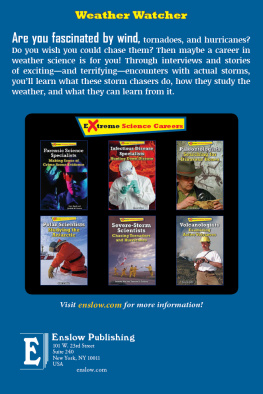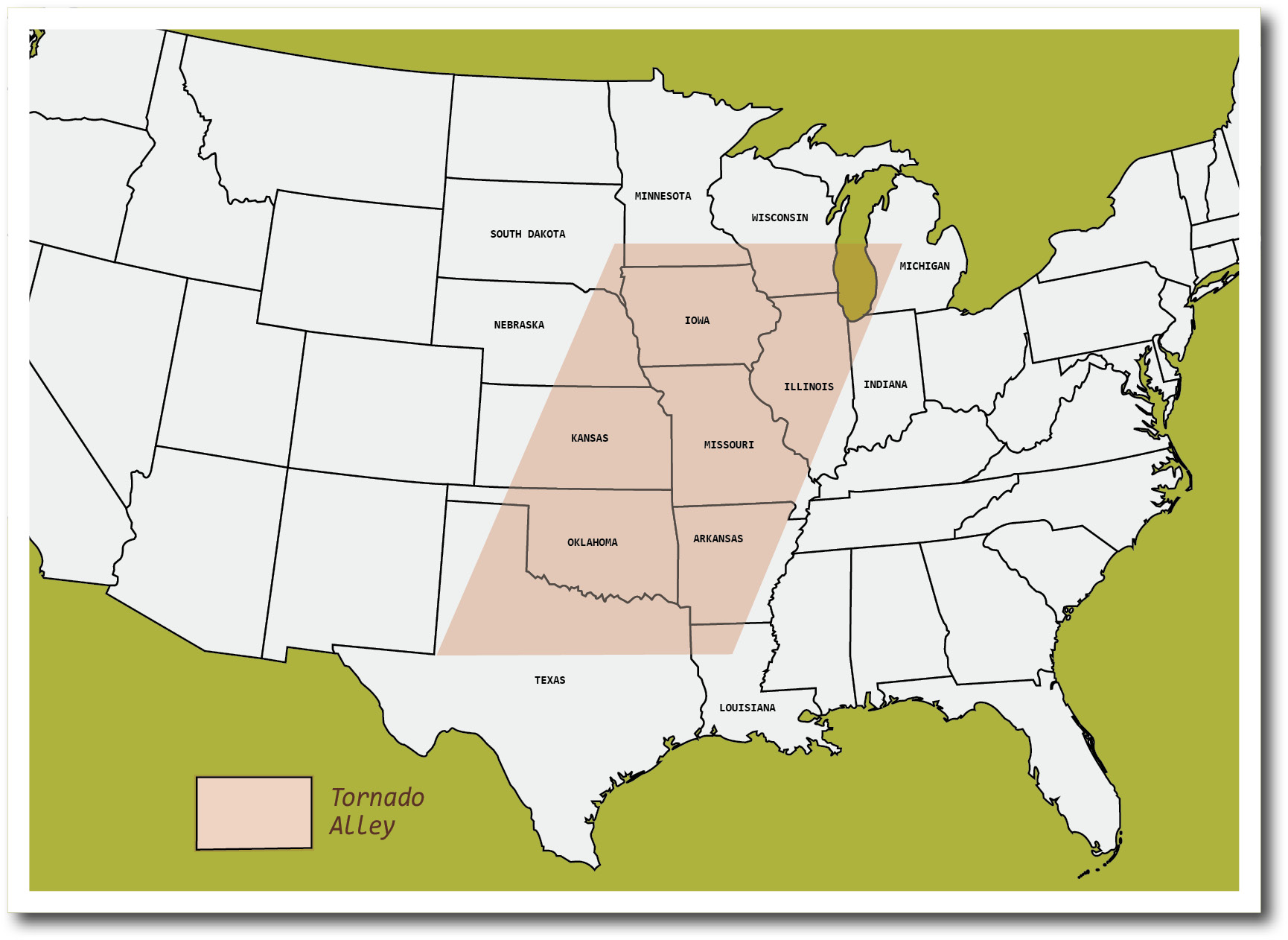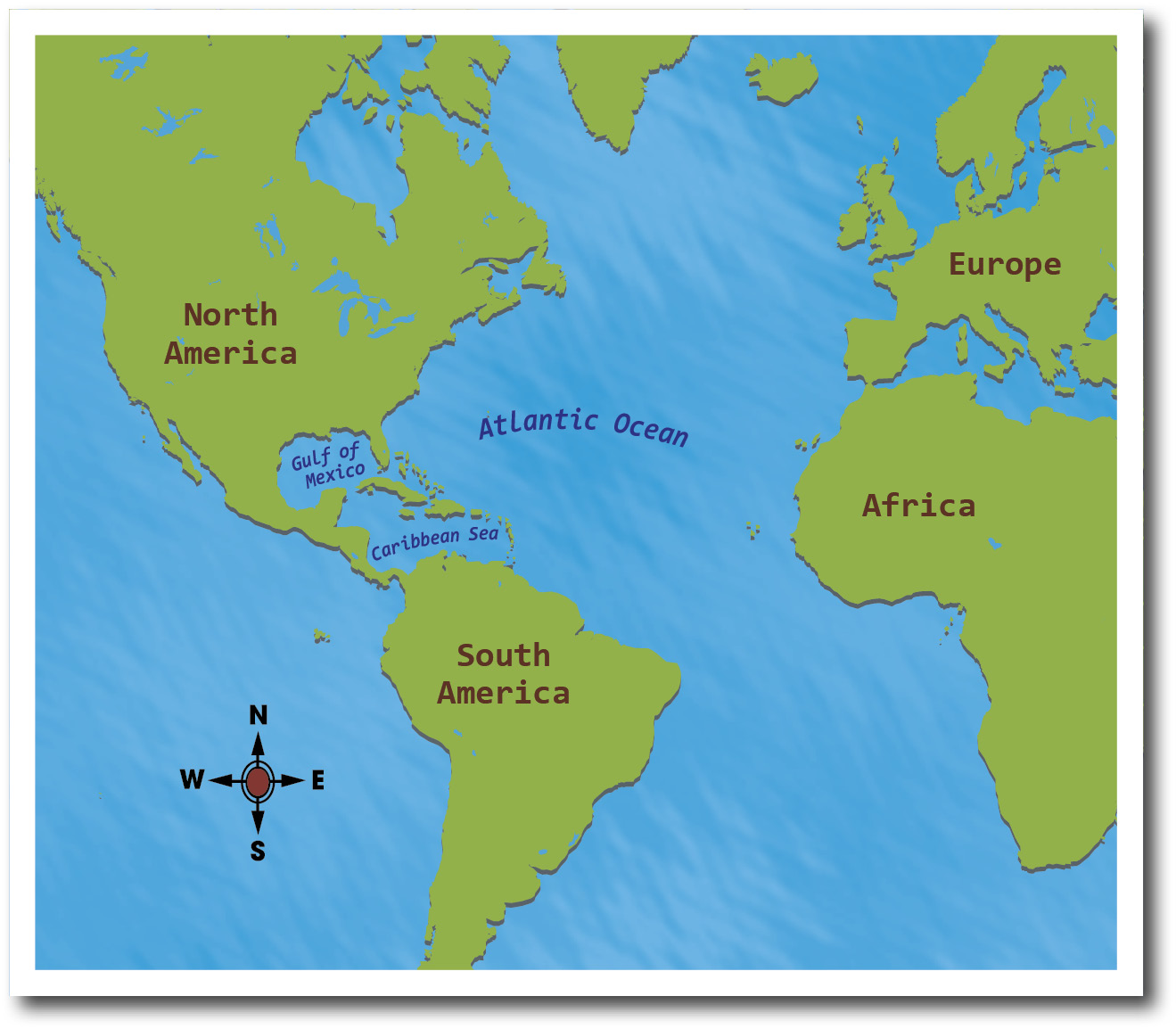For the best You Choose experience,
view in portrait (vertical) orientation.
About Your
Adventure
YOU are a meteorology student who is fascinated by storms. To learn more about weather events, you need to experience them firsthand. But will you be able to survive the dangerous situations?
In this book youll deal with extreme survival situations. Youll explore how the knowledge you have and the choices you make can mean the difference between life and death.
Chapter One sets the scene. Then you choose which path to read. Follow the links at the bottom of each page as you read the stories. The decisions you make will change your outcome. After you finish one path, go back and read the others for new perspectives and more adventures. Use your device's back buttons or page navigation to jump back to your last choice.
YOU CHOOSE the path you take through your adventure.
CHAPTER 1
Amazed by Weather
As soon as you hear a clap of thunder, youre out the door watching the sky. Youve always been amazed by the weather. Your Uncle Dave is a . When you were in grade school, he showed you how to keep accurate weather records.
In high school you read books about the weather, watched the Weather Channel on TV, and listened to weather reports on the radio. When it was time for college, you chose Central Michigan Universitys meteorology program. You have one more year of college. Then youll be a meteorologist just like your uncle.
Dark clouds can suddenly unleash powerful storms.
Youve seen some powerful storms. When you were 10, a tornado struck your grandparents home. It destroyed the dining room wall, Grandpa said, but it never even touched the dishes on the table.
Tornadoes are the most violent storms on Earth. They often develop from thunderstorms. Supercells can occur when warm, moist air rises to meet cold, dry air. About 15 percent of supercells produce tornadoes. The United States has about 1,000 tornadoes a year. Most occur along Tornado Alley, which runs north from Texas. But tornadoes can strike anywhere. As a meteorologist you will give advance warnings so people can seek shelter before a storm hits.
Youve also experienced a flash flood. The power of the fast-moving water surprised you. It tore a garage off its foundation and carried it 2 miles downstream. Flash floods kill about 200 Americans a year, and they can happen anywhere.
One storm youve never seen is a hurricane. Hurricanes are the biggest storms on Earth. Some are more than 500 miles wide. Many of these tropical storms form over warm ocean waters off the coast of Africa. These are the hurricanes that sometimes strike the United States. As the moisture rises, more air moves in to take its place. This creates a strong wind. As the wind circles, it draws more and more moisture from the waters surface. If the storm remains over warm water, it becomes larger and more powerful. But when the storm crosses cold water or land, it loses power and gradually fades away.
Like tornadoes, hurricane winds do lots of damage, but the may be even more dangerous. A storm surge is a type of flood. It occurs when ocean water is blown inland. Some areas near the Atlantic Ocean and the Gulf of Mexico are less than 10 feet above sea level. The surge can cause severe flooding in low-lying areas.
Youll have opportunities to learn about all three types of storms firsthand. You cant wait to spend your life predicting stormsbut first, youll need to survive the summer.
CHAPTER 2
Tornado!
You spot a flyer on the college bulletin board:
SUMMER JOB OPENING
Wanted: van driver for Wild Tornado Tours
Call: Steve Drake, Owner and Tour Leader
When you call the number, Steve explains that his company brings tourists close to the action. Tornado tourists want pictures. They want to experience the fright and thrill of being close to a monster twister. Each tour lasts 10 days, and we try to satisfy our customers.
A tornado touches down in rural Minnesota.
The job sounds perfect. Youll be seeing tornadoes up close and earning money at the same time. The Wild Tornado Tours van contains mobile Internet access, laptop computers, storm-tracking software, and a GPS mapping system. Steve knows how to find twisters using this equipment. We find them and get as close as we can, he says. But safety is important too. With this equipment we can track the storms and avoid getting hurt. That sounds good to you.
In mid-May, you drive to Kansas City, Missouri, where you meet the first group of tornado tourists. Tomi is from Japan, Phil is from New York, and Pamela is from California.
Well zigzag across the Midwest, going where the storms lead us, Steve says. Well cover lots of miles fast. We have to if we want to see tornadoes.
On the first day, Steve directs you to take I-35 north. There are storms forming in Minnesota. Tomorrow may be our lucky day!
You reach Minnesota by nightfall and spend the night in a motel. Clear blue skies greet you in the morning. Was the prediction wrong? Pamela asks.
Steve shakes his head. Dont let the sunshine fool you. Tornadoes often occur on days that start out sunny. The sun heats the ground, which adds strength to afternoon thunderstorms. But every tornado is different. Sometimes huge hailstones fall just before the tornado strikes. In other cases, theres hail, but no tornado. Sometimes strong winds come before the twister. Other times the air is so still that its creepy.
But they all have a funnel, Tomi says.
Yes. But every funnel is unique, Steve replies. Some look like the one in the movie The Wizard of Oz. Others look like ropes hanging beneath a cloud. Sometimes two or three snakelike tornadoes twist and twirl together. They look kind of like a braid.
Steve checks several tornado-chasing Web sites on his computer. Then he connects to the National Weather Service Web site. The National Weather Service is reporting a supercell forming near Northfield, he tells you.
You speed toward Northfield. The tourists prepare their cameras while Steve checks the . Its a big one, he says. The sky grows darker.
Pull over, Steve says. Well watch from here.
Storm chasers use the latest equipment to track storms.
Everyone piles out of the van and sets up their cameras at the edge of the road. You spot a wall clouda low-hanging cloud that develops just before a tornado forms.
The wall cloud is large, dark, and rotating. You see the flickering greenish light of lightning inside of it. A tornado often strikes within 10 to 20 minutes after the wall cloud appears. Suddenly a drops out of the cloud. It twists like a snake. Another dips down beside it. Tornadoes! you shout. Coming this way!



















